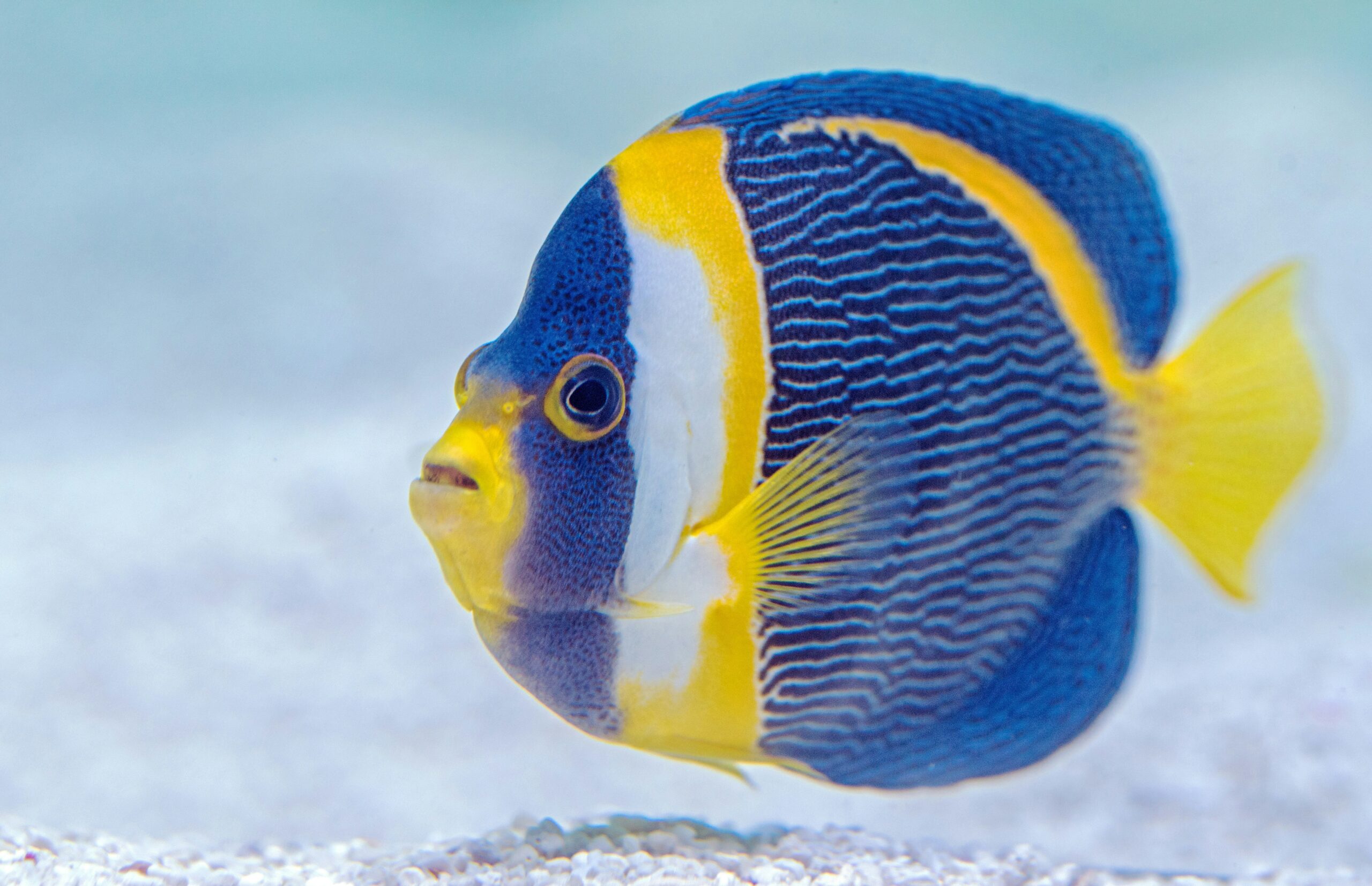How Many Angelfish Can You Keep in a 75-Gallon Tank?
If you’re considering keeping angelfish in a 75-gallon tank, you’re in luck! This tank size provides ample space for a small group of angelfish, allowing them to thrive and display their beautiful colors and graceful movements. However, it’s important to consider a few factors when determining the number of angelfish to keep in your tank.
One of the key factors to consider is the size of the angelfish. Angelfish can grow up to 6 inches in height and 8 inches in length, so it’s essential to provide them with enough space to swim comfortably. In a 75-gallon tank, you can comfortably keep a group of 4 to 6 adult angelfish. This allows each fish to have enough swimming space and reduces the chances of aggression or territorial disputes.
Another factor to consider is the compatibility of angelfish with other tank mates. While angelfish are generally peaceful, they can become aggressive towards smaller or slower-moving fish. It’s best to choose tank mates that are similar in size and temperament to ensure a harmonious community tank. Good tank mates for angelfish include tetras, rasboras, and peaceful catfish species.
Water parameters are also crucial when keeping angelfish. These fish prefer slightly acidic water with a pH level between 6.5 and 7.0. They also require a temperature range of 75 to 82 degrees Fahrenheit. It’s essential to maintain stable water conditions and perform regular water changes to keep your angelfish healthy and happy.
When setting up your 75-gallon tank for angelfish, provide plenty of hiding spots and plants. Angelfish appreciate having areas to retreat to when they feel stressed or threatened.
Dense vegetation, such as Amazon swords or Java ferns, can also help create a natural environment and provide cover for fry if you plan on breeding your angelfish.
In conclusion, a 75-gallon tank is an excellent choice for keeping angelfish. With proper planning and consideration, you can create a beautiful and thriving angelfish community in this tank size. Remember to provide enough swimming space, choose compatible tank mates, maintain stable water parameters, and create a suitable habitat for your angelfish. With these factors in mind, you can enjoy the beauty and elegance of angelfish in your home aquarium.
Consider the Size of Your Angelfish
Angelfish are known for their elegant appearance and elongated fins, which can make them appear larger than they actually are. When calculating the number of angelfish to keep in your 75-gallon tank, it’s crucial to consider the adult size of these fish.
On average, angelfish can grow up to 6 inches in height and 8 inches in length, including their fins. However, some angelfish varieties, such as the Altum angelfish, can reach even larger sizes. Keep this in mind when planning the number of angelfish for your tank.
It’s important to note that the size of your angelfish can also affect their behavior and compatibility with other tank mates. Larger angelfish may be more dominant and territorial, which can lead to aggression towards smaller fish. Therefore, it’s essential to choose tank mates that are compatible in terms of size and temperament.
Additionally, the size of your angelfish can impact the overall aesthetic of your tank. If you have a smaller tank, overcrowding it with large angelfish can make the tank appear cramped and reduce the swimming space for the fish. On the other hand, a larger tank with ample space can accommodate a greater number of angelfish without compromising their well-being.
When considering the size of your angelfish, it’s also important to factor in their growth rate. Angelfish can take several months to reach their full adult size, so it’s crucial to provide them with a tank that allows for their growth. This means providing enough swimming space and ensuring that the tank is properly maintained to support their development.
In conclusion, the size of your angelfish is an important factor to consider when planning the number of fish for your tank. Understanding their adult size, behavior, compatibility with other tank mates, and the impact on the overall aesthetic of your tank will help you create a harmonious and thriving aquatic environment for your angelfish.
When selecting angelfish for your tank, it’s important to consider their size and compatibility with other fish species. Angelfish can grow up to 6 inches in height, so it’s crucial to ensure that your tank can accommodate their size. In a 75-gallon tank, you can comfortably house a group of angelfish without overcrowding them.
It’s also essential to consider the tank’s filtration and water quality. Angelfish are sensitive to poor water conditions, so it’s crucial to maintain a stable and clean environment for them. Regular water changes and monitoring of ammonia, nitrite, and nitrate levels are necessary to keep your angelfish healthy and thriving.
When introducing angelfish to your tank, it’s advisable to acclimate them slowly to their new environment. This can be done by floating the bag containing the angelfish in the tank for about 15-20 minutes to allow them to adjust to the temperature. Afterward, you can release them into the tank, ensuring that the water parameters are suitable for their well-being.
In terms of tank decoration, angelfish appreciate the presence of plants and hiding spots. Live plants not only enhance the aesthetics of the tank but also provide angelfish with places to explore and seek refuge. Driftwood and rocks can also be added to create natural-looking structures while also providing hiding spots for the fish.
Lastly, it’s important to consider the diet of angelfish. They are omnivorous and enjoy a varied diet consisting of high-quality flakes or pellets, supplemented with frozen or live foods such as brine shrimp, bloodworms, and daphnia. Feeding them a balanced diet will help maintain their vibrant colors and overall health.
By following these recommended guidelines, you can create a harmonious and thriving angelfish community in your 75-gallon tank. Remember to monitor the behavior and health of your angelfish regularly and make any necessary adjustments to ensure their well-being. With proper care and attention, your angelfish will be a beautiful and captivating addition to your aquarium.
Consider Tankmates and Compatibility
When planning the stocking of your 75-gallon tank, it’s essential to consider the compatibility of angelfish with other fish species. While angelfish are generally peaceful, they can become aggressive towards smaller fish or those with long, flowing fins, mistaking them for potential rivals or food.
Good tankmates for angelfish include peaceful community fish such as tetras, rasboras, corydoras catfish, and peaceful bottom-dwellers like bristlenose plecos. These species have similar temperaments and size requirements, making them suitable companions for angelfish. Tetras, with their vibrant colors and active nature, can create a visually stunning display alongside angelfish. Rasboras, on the other hand, are known for their peaceful nature and schooling behavior, which can add movement and liveliness to the tank.
When it comes to bottom-dwelling fish, corydoras catfish are an excellent choice. They are not only compatible with angelfish but also help to keep the tank clean by scavenging for leftover food and debris. Bristlenose plecos, with their distinctive appearance and algae-eating habits, can also be great tankmates for angelfish.
Avoid keeping angelfish with aggressive or fin-nipping species, as this can lead to stress and injury for your angelfish. Species such as tiger barbs or larger cichlids may exhibit territorial behavior and nip at the angelfish’s long fins, causing harm and distress. It’s crucial to research the temperament and behavior of potential tankmates before adding them to your aquarium.
Additionally, it’s important to provide ample hiding spots and visual barriers within the tank to create territories and reduce aggression. This can be achieved through the use of plants, rocks, and driftwood, which not only enhance the aesthetics of the tank but also provide shelter for your angelfish. Live plants, such as Amazon sword or Java fern, not only serve as hiding spots but also contribute to the overall health and water quality of the tank by absorbing excess nutrients and providing oxygen.
Creating a well-balanced and harmonious community in your 75-gallon tank requires careful consideration of the compatibility and needs of the fish species involved. By selecting suitable tankmates and providing appropriate hiding spots and visual barriers, you can ensure a peaceful and thriving environment for your angelfish and other inhabitants.
In addition to regular water changes and proper filtration, there are other steps you can take to maintain optimal water quality for your angelfish. One important aspect to consider is the pH level of the water. Angelfish prefer slightly acidic to neutral water, with a pH range of 6.5 to 7.5. Monitoring and adjusting the pH level as needed will help create a suitable environment for your angelfish.
Another factor to consider is the hardness of the water. Angelfish thrive in soft to moderately hard water, with a general hardness (GH) range of 3 to 10 dGH. Testing the hardness of your water and making any necessary adjustments will ensure that your angelfish are comfortable and healthy.
When it comes to filtration, it’s important to choose a system that is appropriate for the size of your tank and the number of angelfish you have. A good filtration system will not only remove debris and waste from the water but also provide adequate oxygenation. This is especially important for angelfish, as they require well-oxygenated water to thrive.
Regular monitoring of ammonia, nitrite, and nitrate levels is crucial for the health of your angelfish. Ammonia and nitrite are highly toxic to fish and can quickly lead to illness or death if levels become too high. Nitrate, on the other hand, is less toxic but can still be harmful in high concentrations. Testing your water regularly and taking appropriate action to correct any imbalances will help ensure the well-being of your angelfish.
Lastly, it’s important to keep an eye on the overall cleanliness of your tank. Regularly removing any uneaten food, decaying plants, or other debris will help prevent the buildup of harmful substances in the water. Additionally, maintaining good hygiene practices, such as washing your hands before and after handling the tank, will help prevent the introduction of any harmful bacteria or contaminants.
By following these guidelines and maintaining excellent water quality, you can create a thriving and healthy environment for your angelfish. Remember, a clean and well-maintained tank is the key to ensuring the long-term health and happiness of your angelfish.

